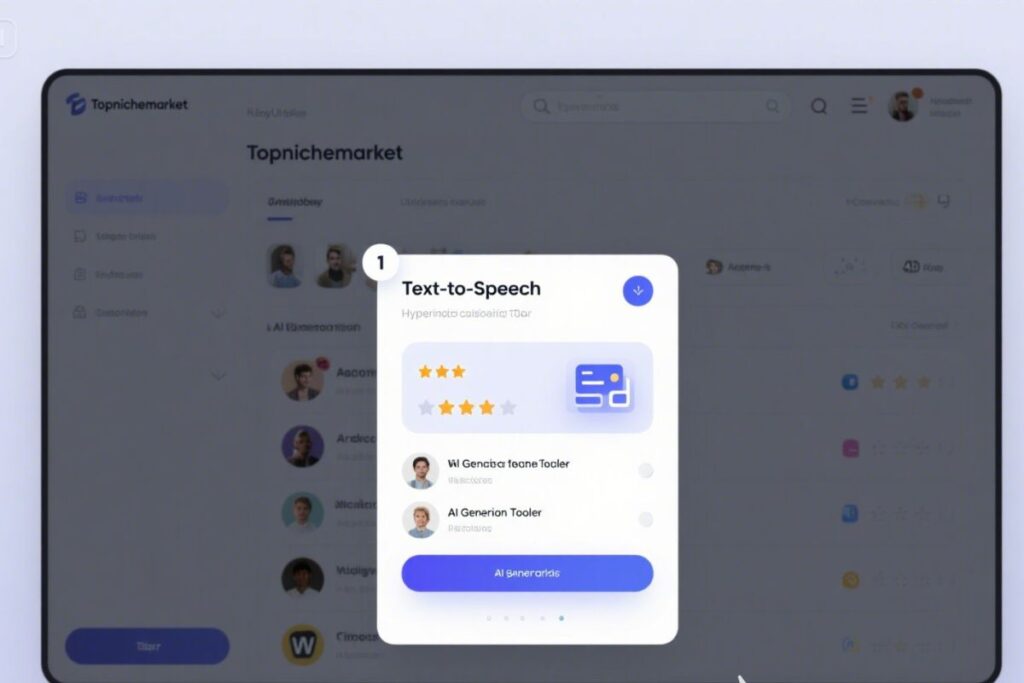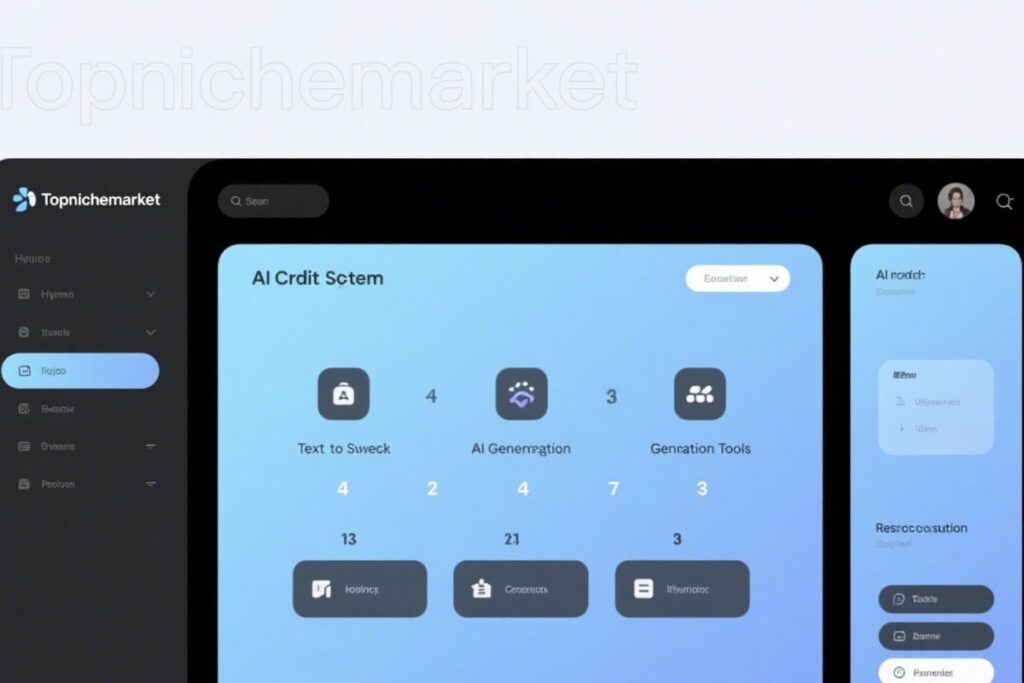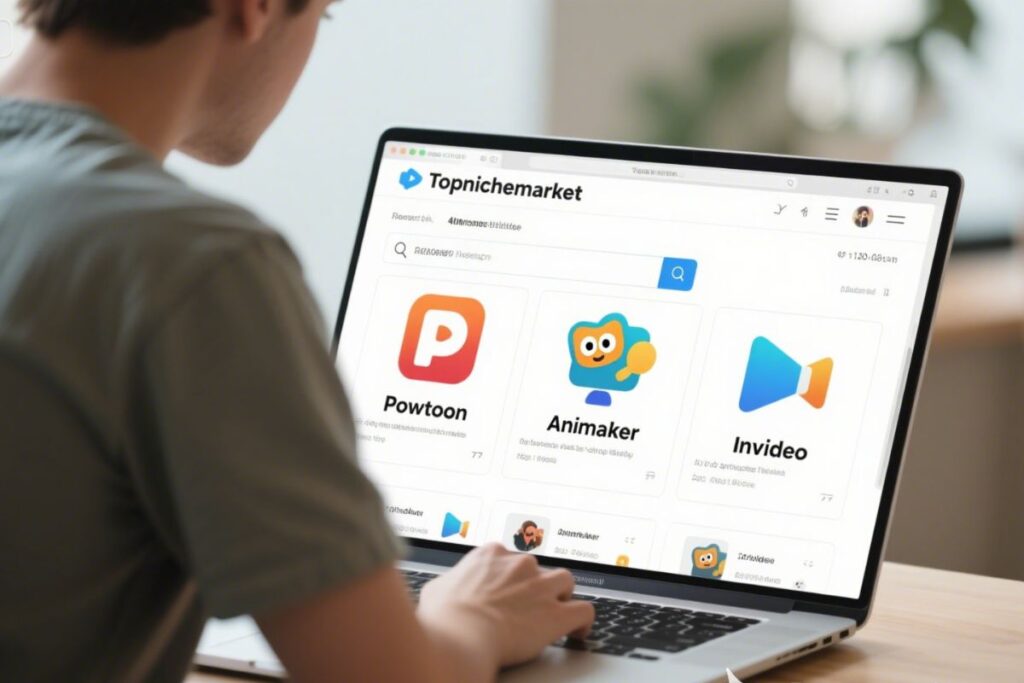Table of Contents
ToggleExploring User Sentiment on Vyond Animation Video Platform

Exploring User Sentiment on Vyond Animation Video Platform
Vyond, a platform operating under the GoAnimate, Inc. umbrella, has indeed carved out a significant niche in the cloud-based animated video creation market over the years. It has long been a tool considered by many for crafting engaging and dynamic visual narratives. However, the digital tool ecosystem is ever-evolving, and user sentiments towards platforms like Vyond appear to be equally dynamic. To truly understand the platform’s standing today, the most authentic source of information comes from the individuals who interact with it daily – its users.
Our deep dive in this piece is specifically anchored in a particular dataset: the user reviews available on Trustpilot. When the information for this analysis was compiled, Vyond’s overall average rating on this platform stood at a concerning 2.3 stars, falling into the “Poor” category. This rating was based on a total of 18 reviews. A significant majority of these, precisely 56%, assigned the lowest possible rating of 1 star to the platform. While the collection includes a few older reviews that reflect past satisfaction, the collective voice of the most recent feedback paints an overwhelmingly negative picture.
This data presents a compelling, albeit troubling, narrative for potential users. Our objective is to meticulously dissect this user feedback. We will highlight the prominent common themes, detail the reported pros and cons as experienced by users, and elaborate on the specific concerns frequently raised. Many reviewers express feeling significantly impacted by changes recently implemented within the platform. Our goal is to furnish a clear, user-centric perspective on critical aspects such as features, overall ease of use, technical performance, customer support quality, pricing structures, and the alternative platforms users are exploring. By the conclusion of this article, prospective users should have a much clearer understanding of whether Vyond, as perceived by this specific group of reviewers, aligns with their needs for an animated video maker in the current environment. The insights provided are intended to help make an informed decision based on the reported realities of current users.
Vyond’s Core Functionality and Features: What Users Highlight (Both Good and Bad)
The effectiveness of any creative software is fundamentally tied to its core functionality. Users invest in platforms like Vyond with the expectation of unleashing their creativity and producing professional-grade videos efficiently. The Trustpilot reviews, despite their limited number, touch upon various facets of Vyond’s capabilities, illuminating both the initial appeal that drew users in and the subsequent points of friction and frustration that many have recently encountered. Understanding these aspects is crucial for anyone evaluating an animated video maker.
Ease of Animation and Asset Library: Initial Appeal vs. Current Reality
Several reviewers, particularly those contributing older feedback, offered praise for Vyond’s perceived ease of use during earlier periods. They highlighted the speed and simplicity with which they could create videos. Users identified by names like NoraG, cris pines, tim jack, and Violet Lowry found the platform relatively straightforward for bringing their animated concepts to fruition, suggesting that previous iterations of Vyond offered a smoother, more intuitive workflow. This ease of creative execution is a fundamental requirement for anyone seeking to produce engaging vyond animation efficiently – the ability to quickly translate ideas into visual sequences without facing a steep learning curve.
A notable positive aspect frequently mentioned in the more favorable feedback was the perceived high quality and extensive variety of the “ready to use characters/environments/components.” Reviewers described these built-in assets using terms like “top notch” and “beautiful,” implying that the platform offered a robust and aesthetically pleasing library that served as an excellent starting point or foundation for their video projects. For many creators, access to a rich and easily accessible asset library is invaluable. It significantly reduces or eliminates the need for complex custom illustration or sourcing external media, thereby accelerating the production timeline considerably. Such a comprehensive library is often considered a key feature users expect from a capable animated video maker.
However, even within the discussion surrounding assets, a note of inconsistency was raised. Reviewer Tony Jay specifically pointed out an issue concerning the perceived lack of consistency when attempting to integrate assets from different visual styles provided by Vyond. They mentioned a notable disconnect between “Business Friendly images vs. Contemporary vectors.” This feedback suggests that while the platform’s asset library might be vast, successfully blending elements across different built-in styles within a single project was not always a seamless process, potentially hindering the full realization of a user’s creative vision. This points to a need for improved consistency and better integration capabilities among the platform’s diverse visual offerings.
Text-to-Speech (TTS) and Audio: From Convenience to Controversy

Text-to-Speech (TTS) and Audio From Convenience to Controversy
The integration of Text-to-Speech technology is a powerful feature within animation platforms, offering creators the ability to generate voiceovers directly from written scripts. This capability can significantly save time and resources compared to traditional methods of recording or sourcing professional voice talent. Reviewer cris pines specifically highlighted the positive aspects of Vyond’s TTS functionality, noting the ease with which they could generate audio with minimal effort. This convenience meets a crucial need for creators, particularly those working under tight deadlines, managing limited budgets, or lacking access to dedicated voice recording facilities.
Despite its potential and initial praise, this feature became a major source of contention and negative feedback according to the provided reviews, specifically due to its connection to an AI credit system. The reviewer “Wizard of Oz” provided particularly severe criticism regarding TTS usage being tied to this system, detailing complaints about even characters being counted as credits. This implementation fundamentally alters the perceived value proposition of the TTS feature, transforming it from a simple, convenient utility into a potential cost burden that users must carefully manage. Based on these reviews, users expressed a strong desire and need for unlimited standard and high-quality TTS functionality, viewing the imposition of a credit system on this basic animation requirement as unnecessary, punitive, and a barrier to workflow.
Adding to user frustration, the reported loss of specific, favored text-to-speech voices – such as the “Oddcast voices” explicitly mentioned by Wizard of Oz – also emerged as a significant point of dissatisfaction. Creators often develop preferences for particular voices that best align with their brand identity, content style, or target audience. The removal of these established voice options, especially if done without adequate replacement or transparent communication, represents a loss of a valued tool and disrupts established creative workflows. The clear user need articulated here is for predictable, cost-effective access to a wide range of high-quality TTS options and a commitment to transparency and user notification regarding any changes to the available voice library.
Vyond Go (AI Features): The Promise and the Problems of the AI Animated Generator
Vyond Go is presented within the reviews as the platform’s dedicated ai animated generator feature. Its stated purpose is to leverage artificial intelligence to streamline and accelerate the video creation process. The concept of an animated video maker ai tool is inherently exciting for creators. It holds the promise of significantly faster content production and has the potential to make animation more accessible to individuals who may not possess extensive technical or animation skills. This aligns with the broader market trend towards developing powerful ai video makers and user-friendly ai cartoon video generator capabilities.
However, the reviews, particularly the detailed feedback from “Wizard of Oz,” paint a highly critical picture regarding the implementation of Vyond Go. The associated AI credit system is emphatically described as a “SCAM.” The complaints detailed by this reviewer are specific and severe, outlining significant limitations and unexpected costs associated with using the AI features:
- A reported low allowance of credits per video (e.g., 400 credits) is cited as insufficient by users, even for performing what they consider basic generation tasks. This suggests that the credit allotment does not match the practical needs of using the feature effectively.
- Strict limits on the total number of generations users can perform are also reported, further restricting the flexibility and utility of the AI tool for iterative creative processes.
- Perhaps most problematically, the connection between these AI credits and the usage of Text-to-Speech is highlighted. This effectively bundles a core animation function (adding voiceover) with the potentially expensive and limited AI credits, further restricting basic functionality under the umbrella of new AI features.
Based on these reviews, users feel strongly that this credit system transforms what should be a beneficial feature designed to enhance the core subscription into a confusing, unpredictable, and potentially exorbitant add-on cost. The financial burden of using the ai animated generator and even basic TTS becomes difficult to predict and manage. The pressing need identified by users is for a transparent, fair, and predictable model for accessing AI features. They seek a system that feels like a valuable enhancement included within the core subscription cost, rather than a punitive, pay-per-use structure that extends even to foundational animation elements.
Features Behind Paywalls and Removed Features: The Shrinking Toolset

Features Behind Paywalls and Removed Features The Shrinking Toolset
A frequently recurring and particularly significant source of complaint among recent reviewers is the perception that previously available features have been either removed entirely or are now restricted to higher-cost subscription plans. This has a direct and negative impact on a user’s ability to create the specific type of content they require and is widely felt to represent a significant reduction in the value proposition offered by the platform.
The reviewer “Wizard of Oz” provided a specific list of critical features that, according to their feedback, users complain are now either inaccessible or require upgrading to a more expensive subscription tier. These include:
- The option to remove the Vyond watermark, a feature that reviewers suggest was previously standard or available on lower-tier plans, is reportedly now exclusive to higher tiers. For any professional or business use, the ability to remove watermarks is considered a fundamental requirement for maintaining brand identity and professional appearance.
- The capability to upload custom fonts, essential for ensuring brand consistency across all video assets, is also reported as no longer available or severely restricted. This limitation hinders a user’s ability to align their video content with their established visual branding guidelines.
- Changing aspect ratios, a crucial function for adapting video content for diverse platforms and viewing contexts (such as social media feeds, widescreen presentations, or vertical formats), is another feature users complain has been significantly limited. This restricts the versatility of the content created.
- New download limits were also mentioned as a restriction, potentially impacting a user’s ability to produce and export video assets in the volume or frequency needed for their workflow.
Reviewer Buddy added to this list of perceived feature removals by highlighting the loss of “best themes” like “Comedy World” and the reported removal of features specifically designed for social media output. This feedback suggests a step backward in terms of the creative options available and the practical application of the platform for specific distribution channels. Carol Ann also contributed by mentioning reduced or limited assets, echoing the sentiment that the asset library, previously lauded as a strength, might now be less accessible or offer less variety to users.
These reported removals and restrictions collectively generate a strong user need for predictable access to essential creative and functional features. Furthermore, users desire clear and proactive communication regarding any changes to the platform’s capabilities. Many reviewers express feeling as though they are paying the same amount or even more for a toolset that has been significantly diminished in scope. This perceived reduction in functionality fundamentally erodes the trust that users had built based on the platform’s previous capabilities and pricing models.
Ease of Use and User Experience: A Tale of Two Periods?

Ease of Use and User Experience A Tale of Two Periods
The overall user experience of a software platform encompasses more than just the availability of features; it includes the workflow fluidity, the intuitiveness of the interface, and how effortlessly a user can navigate and utilize the tool. Looking at the Trustpilot reviews provided, it appears there has been a significant and negative shift in the narrative surrounding Vyond’s ease of use, suggesting what could be characterized as “a tale of two periods” in its user experience history.
Older feedback often contained praise for the platform’s user-friendliness and the speed at which users could generate videos. This earlier sentiment suggests that, at a point in time, Vyond successfully met the user need for an accessible animation tool that did not demand extensive technical expertise to operate effectively.
However, more recent reviews point to substantial negative impacts on the user experience that disrupt workflow and cause frustration:
- Login Issues: Reviewer NoraG reported encountering problems with logging into the platform. The inability to access a cloud-based tool is a fundamental barrier to its use. Such basic technical hurdles not only severely disrupt a user’s workflow but also erode trust in the platform’s reliability and accessibility.
- Community Removal: NoraG also noted the discontinuation of the Vyond community forum. This point is particularly critical. Online user communities function as vital resources where users can ask questions, exchange tips and techniques, troubleshoot problems collectively, and provide direct feedback to the platform’s developers. The removal of this channel leaves users feeling isolated, making it significantly more difficult for them to find help or voice their concerns effectively. This action removes a key support system and a valuable feedback loop that contributes positively to a user’s overall experience and sense of connection with the platform.
- Difficulty Accessing Help: Carol Ann’s complaint that help is “automated-only” further reinforces the feeling of user isolation and lack of support. When users encounter issues, particularly complex ones related to removed features, changes in policy, or navigation of new systems like the AI credits, they often require personalized human support to find resolutions. Automated support systems frequently prove insufficient for addressing specific or nuanced problems, leading to prolonged frustration and unresolved issues. The need for responsive, accessible, and human customer support is paramount, especially during periods of significant platform changes.
- Feeling Overwhelmed by Changes: The cumulative effect of numerous features being reportedly locked behind higher paywalls or removed entirely creates a user experience where creators may find themselves constantly searching for tools they previously relied upon or encountering unexpected financial barriers. This situation generates a sense of being overwhelmed, undermines the initial ease of use that might have attracted them, and can force users into confusing or undesirable upgrade paths, or even lead to the abandonment of ongoing projects.
The contrast between the older feedback praising ease of use and the recent reviews detailing frustrations with technical barriers, lack of community, poor support, and confusing feature accessibility is stark. What was once perceived as intuitive and user-friendly now appears to be seen by many recent reviewers as frustrating, isolating, and difficult to navigate.
Performance, Reliability, and Critiqued Support

Performance, Reliability, and Critiqued Support
For any professional or business user who depends on an animated video maker as a core tool in their workflow, consistent performance, software reliability, and responsive customer support are non-negotiable requirements. An unstable platform and inaccessible or ineffective help channels can quickly transform creative processes into frustrating and unproductive experiences. The provided Trustpilot reviews raise serious and significant concerns in these critical areas, contributing heavily to the negative user sentiment.
Technical Issues: When the Tool Doesn’t Work
Reviews explicitly mention technical problems that directly impede the platform’s usability and reliability, impacting the user’s ability to create effectively:
- Carol Ann reported that the platform was “crashing constantly.” Frequent software crashes are highly disruptive and potentially catastrophic for creators, often resulting in lost work, significant wasted time, and immense frustration. Such instability fundamentally undermines any perceived ease of use or the value of powerful features if the core software itself is unreliable.
- Specific glitches were also noted by reviewers. For instance, Tony Jay mentioned problems with asset scaling. While seemingly minor, issues like incorrect scaling can break the visual consistency and integrity of a video project and often require considerable time and effort to find workarounds, adding unexpected friction to the creative workflow.
- Reinforcing a point made earlier by NoraG, recurring login issues are not merely inconvenient technical hiccups; they represent a critical failure in the platform’s fundamental reliability. If a user is unable to access the software in the first place, they cannot perform any work, rendering all available features and assets irrelevant.
These reported technical problems collectively paint a picture of a platform that is not consistently stable or reliable. This failure to meet the basic user need for a dependable creative environment is a major detractor according to these reviews.
Support and Communication Failures: The Worst Support Ever?
Perhaps the single most emphatic and widespread complaint across the recent negative reviews relates to the quality and accessibility of customer support and the transparency of communication from Vyond. This is a vital service need, particularly when users encounter frustrating technical glitches, experience billing discrepancies, or face confusion stemming from significant, unexplained platform changes.
Reviewers utilized exceptionally strong language to articulate their experiences with customer support. Phrases used include “worst support ever,” “poor,” “automated only,” “unresponsive,” “ignored emails,” and the feeling of being “ghosted” (as described by Steve, Carol Ann, and Wizard of Oz). These descriptions convey a deep level of dissatisfaction and a profound sense of being abandoned or neglected by the company when seeking assistance. When users encounter critical issues – such as losing project work due to crashes, facing problems navigating the controversial AI credit system, or discovering unexpected charges – the inability to obtain timely, human, and effective help is not merely frustrating; it can be significantly damaging to their productivity, their business operations, and their trust in the platform provider.
A particularly damning complaint, prominently highlighted by “Wizard of Oz,” is the assertion that Vyond “HAS NEVER responded to a single negative Trustpilot review.” This pattern, as perceived by users, suggests a lack of accountability and a seeming disregard for the publicly voiced issues and frustrations of their customer base. For potential users who are conducting due diligence and researching Vyond, seeing a company that consistently appears to ignore public negative feedback on a prominent review platform like Trustpilot serves as a significant red flag regarding their commitment to customer satisfaction, issue resolution, and transparency.
Furthermore, the reviews suggest a troubling pattern of non-transparent communication, particularly concerning the removal or restriction of features. Users reported discovering that features they relied upon were gone or locked behind higher paywalls only when they actively needed to use them, rather than being informed through clear, proactive communication from Vyond. This perceived lack of foresight and poor communication strategy contributes significantly to user frustration, creating a feeling of being misled, undervalued, or unfairly treated by the platform provider.
In summary, the collective voice of these Trustpilot reviews indicates that Vyond is perceived to be failing significantly in meeting the user need for reliable technical performance and accessible, responsive customer support. This reported breakdown in both service delivery and trust appears to be a major contributing factor to the overwhelmingly negative sentiment expressed in the recent feedback.
Vyond Pricing and Plans: The Center of Recent Controversy

Vyond Pricing and Plans The Center of Recent Controversy
Financial considerations are a crucial factor for any user evaluating or subscribing to creative software. Users invest in platforms with clear expectations regarding value for money. The provided Trustpilot reviews make it abundantly clear that Vyond’s current pricing structure and recent changes to its subscription plans have become the most significant and frequently voiced source of user outrage and dissatisfaction. According to these reviewers, these changes have fundamentally and negatively altered the perceived value offered by the animated video maker.
Based strictly on the information presented in these reviews, the perceived issues surrounding Vyond’s pricing structure and recent changes can be detailed as follows:
- Removal of Affordable Plans: A major point of severe contention reported by reviewers is the alleged discontinuation of the more affordable “Essential Plan” (as noted by Wizard of Oz). This plan seemingly provided an accessible entry point for individual creators and small businesses, allowing them to access Vyond’s core animation capabilities without facing prohibitive costs. Its reported removal leaves users with only significantly more expensive options as alternatives, effectively pricing out a segment of the potential user base.
- Renaming and Devaluation: Reviewers report that the “Premium” plan was allegedly renamed to “Starter.” However, this change reportedly came with a demonstrable reduction in value while simultaneously being offered at a high price point. “Wizard of Oz” cited a specific price of $699 per year for this rebranded “Starter” plan, a cost that reviewers felt was exorbitant given the significantly reduced feature set compared to the previous “Premium” tier. This action is widely interpreted by these reviewers as a deliberate devaluation of the subscription offering.
- Pressure to Upgrade: Reviewer Mustafa khan Wazir highlighted a perceived pressure to upgrade to the significantly more expensive “Agency Plan,” even for individual sellers who do not operate as large agencies. This suggests a potential shift in Vyond’s business model aimed at pushing users towards the highest subscription tiers, regardless of their actual scale or specific needs. This makes the platform appear either inaccessible due to cost or unjustifiably expensive for many individual users and smaller entities.
The core complaints regarding pricing are echoed repeatedly and with considerable force throughout the recent reviews, using terms such as “Outrageous prices,” “less for more money,” “pay more, and more if you want even less,” and having “jacked up the prices” (Dede, Carol Ann, Buddy). Users express a strong feeling of being exploited, believing they are being asked to pay significantly higher fees for a product that now offers fewer accessible features and provides less overall value than it did previously. This fundamental failure to meet the user need for fair pricing and acceptable value is identified as a primary driver of the overwhelmingly negative sentiment.
The AI Credit System as a Pricing Issue: The controversial AI credit system, discussed earlier in the context of features and Vyond Go (the ai animated generator), is also fundamentally and inextricably linked to the platform’s pricing problems according to these reviews. Described in no uncertain terms as a “SCAM” (Wizard of Oz), this system allegedly requires users to purchase or consume additional credits for using basic functionalities like Text-to-Speech (reportedly paying per character) and for utilizing the ai animated generator feature itself. This introduces a layer of unpredictable, variable costs on top of already high and fixed subscription fees. Users express the feeling that they are paying a premium subscription price only to be charged again through a credit system for what they perceive as core functionalities or promised AI enhancements. This unpredictable and layered cost structure is widely perceived as unfair, non-transparent, and potentially predatory.
Other pricing-related complaints mentioned in the reviews include concerns about the duration of the free trial period (Jack Lawler), suggesting that it may not be sufficient time for potential users to thoroughly evaluate the platform, especially given its complexity and the numerous reported issues. Furthermore, issues described as problematic auto-registration (“ripped off” – 武德 武 德) point towards potentially confusing or non-transparent billing practices that could inadvertently trap users into unwanted or unexpectedly recurring subscriptions.
The overwhelming sentiment conveyed in the Trustpilot reviews analyzed here is that Vyond’s current pricing model is perceived as fundamentally unfair, provides poor value for the money charged, and allegedly employs questionable practices such as the AI credit system and potentially aggressive auto-renewal mechanisms. This makes pricing a significant barrier to adoption and a primary source of deep anger and dissatisfaction for the user base represented in these reviews.
Pros and Cons: A Summary Based on Provided User Feedback

Pros and Cons A Summary Based on Provided User Feedback
By synthesizing the various points raised across the collection of Trustpilot reviews, we can construct a composite summary of Vyond’s perceived strengths and weaknesses, drawing strictly and solely from the user feedback provided in the source material. It is crucial to acknowledge the inherent bias in the provided dataset towards recent, predominantly negative experiences.
Vyond Advantages (Based on some reviews, mostly older):
While the bulk of recent feedback is overwhelmingly negative, glimpses of what users once valued and appreciated about Vyond can be discerned, primarily from older reviews present in the dataset:
- Easy to use for quick animation: In its earlier state, reviewers found the platform to be intuitive and efficient, enabling them to rapidly create vyond animation. This suggests a period where the workflow was perceived as smooth and accessible.
- Good library of ready-to-use assets/characters: The availability of what were described as “top notch” and “beautiful” pre-built characters, environments, and components was cited as a significant positive aspect. This robust asset library streamlined the creative process when the platform functioned as expected.
- Effective Text-to-Speech (initial setup): Before its integration with the controversial credit system, the TTS feature was perceived as a convenient and straightforward method for adding voiceovers to animated projects, saving time and effort.
- Potential for marketing impact: Some older feedback hinted at the perceived effectiveness of videos created with Vyond in achieving marketing goals, such as increasing clicks or enhancing engagement, suggesting the format’s potential power when the tool was functioning favorably.
- Considered “Industry standard” for companies: One older review positioned Vyond as the preferred or go-to tool for businesses, implying that it was once seen to possess a certain level of quality, reliability, and comprehensive features suitable for corporate use cases, a perception that recent reviews strongly challenge.
These points, derived from earlier feedback, highlight the aspects that initially attracted and satisfied users and represent the potential that the platform once embodied, according to this subset of reviews.
Vyond Disadvantages (Based predominantly on recent reviews):
The vast majority of the recent Trustpilot feedback is dedicated to detailing a wide array of disadvantages that users feel have either newly emerged or significantly worsened. These points constitute the primary reasons behind the low overall average rating and the high proportion of 1-star reviews received recently:
- High and increasing cost: The subscription fees are described in harsh terms such as “outrageous,” “waste of money,” and “pricy.” They are widely perceived as unjustifiably high, particularly considering the reported decrease in the platform’s value proposition.
- Decreasing value for money: Users consistently express the strong sentiment that they are receiving “less for more,” feeling forced to pay higher prices for a tool that provides fewer accessible features and imposes more restrictions than it used to.
- Removal of affordable plans and key features: The reported discontinuation of more accessible plans like the “Essential” plan, alongside the alleged removal or restriction of crucial features (including watermark removal, custom font uploading, and aspect ratio adjustments), are significant sources of user pain and frustration.
- Forced upgrades and features locked behind paywalls: Reviewers report feeling pressured into purchasing expensive higher-tier plans solely to access functionalities that they consider basic, essential, or which were previously included in lower-cost subscriptions.
- Problematic and perceived “SCAM” AI credit system: The credit-based system governing Vyond Go (the ai animated generator) and Text-to-Speech usage is fiercely criticized. It is widely seen as unfair, unpredictable in cost, and a mechanism to charge users extra for what they view as core platform usage. This system is reported to significantly impact the cost of generating content using the ai animated generator and even basic voiceovers.
- Terrible, unresponsive, and automated-only customer support: This is a major, frequently repeated complaint across recent reviews. Users report feeling ignored, “ghosted,” and unable to obtain effective, human assistance to resolve critical technical, billing, or feature-related issues.
- Pervasive technical issues: Reports of constant platform crashes and other glitches undermine the software’s reliability, leading directly to lost user productivity and significant frustration.
- Lack of transparency and poor communication regarding changes: Users report feeling blindsided by unexpected feature removals, policy shifts, and pricing changes, contributing to a severe erosion of trust in the company.
- Ethical concerns raised by users: Reviewers shared concerns related to perceived inconsistencies in Vyond changing rules (e.g., regarding using videos for commercial gigs) and inconsistent enforcement of these rules, leading to feelings of being unfairly treated or penalized.
- Removal of community features: The reported discontinuation of the user forum is seen negatively, leaving users feeling isolated and deprived of a valuable resource for self-help, peer support, and direct communication with the platform.
- Issues with asset handling/scaling: Specific technical glitches, such as reported inconsistent asset scaling, also contribute to a frustrating and inefficient creative workflow for some users.
- Forced auto-renewal issues: Complaints about being automatically charged for subscriptions without clear consent or provisions for easy cancellation add to the user sentiment of being “ripped off.”
This extensive compilation of disadvantages, drawn directly and exclusively from the collective voice of the provided Trustpilot reviewers, offers a clear and compelling explanation for why current user sentiment, as represented by this data, appears so profoundly negative.
What Users Say: Summarizing the Trustpilot Sentiment

What Users Say Summarizing the Trustpilot Sentiment
To fully appreciate the collective weight and significance of the user feedback presented, it is essential to synthesize the overall sentiment conveyed through this specific collection of Trustpilot reviews. As initially noted, based on the data compiled, Vyond holds an average score of 2.3 stars, categorized as “Poor,” with a substantial majority (56%) of the 18 reviews assigning the lowest possible 1-star rating. This low score is far more than just a numerical value; it serves as a clear indicator of a critical level of dissatisfaction among the users who chose to publicly share their experiences on this platform.
The most striking and consistent aspect of the reviews analyzed is the dramatic contrast observed between the handful of older, more positive reviews (which occasionally praised aspects such as ease of use and asset quality) and the overwhelming tide of negativity present in the more recent feedback. This sharp dichotomy strongly suggests that the issues driving the negative sentiment are not inherent or long-standing flaws in the platform’s core concept itself, but rather stem from more recent, fundamental, and widely impactful changes implemented by the company.
The recent reviews are not merely vague complaints; they provide detailed accounts of significant problems impacting policy, pricing, feature accessibility, and customer support. Users employ strong, often emotionally charged, language to articulate their frustrating experiences. Phrases such as “Vyond’s Worst Update Yet” powerfully capture the widespread feeling that recent changes have substantially degraded the platform’s usability and value. Descriptions like “Collapsing into greed and gaslighting” and accusations of “Unethical Practices” reflect a deep sense of betrayal and mistrust directed towards the company’s perceived changes in pricing models, feature access policies, and communication strategies. Terms like “Waste of money” and “Absoulte rubbish” encapsulate the core user sentiment that the platform no longer justifies its considerable cost or, in some cases, even functions reliably. The repeated and emphatic complaint of having experienced the “worst support ever” underscores the critical failure in delivering adequate customer service, a fundamental need for any software user. The feeling of being “ripped off” effectively summarizes the anger and frustration surrounding the perceived unfairness of pricing adjustments and issues with auto-renewal.
The comprehensive list of 10 distinct demands mentioned in one particularly detailed negative review serves as a powerful, user-articulated summary of the key pain points. It precisely outlines the areas that deeply frustrated users feel need to be addressed to even begin restoring their trust and the platform’s perceived value. These demands likely encompass critical areas such as a return to fair and transparent pricing, clear and predictable policy enforcement, unrestricted access to essential features, reliable and human-centric customer support, and potentially a fundamental reconsideration or removal of the controversial AI credit system.
In essence, the Trustpilot reviews analyzed here collectively present a portrait of a user base that feels significantly alienated, exploited, and profoundly underserved by the recent changes made to Vyond. The predominant sentiment conveyed is one of intense frustration, deep disappointment, and a strong, often emphatic, recommendation for prospective users to exercise extreme caution or look elsewhere.
Alternatives Mentioned by Vyond Users
When users encounter significant dissatisfaction with a service, particularly one critical to their work, they naturally begin exploring alternative solutions. The Trustpilot reviews analyzed here, combined with the implicit competitive context of platforms appearing alongside Vyond on review sites, offer valuable insights into which other ai video makers or animated video maker ai tools users are considering, migrating to, or recommending when they express their disappointment with Vyond. This section is particularly relevant for readers who find the issues highlighted in the Vyond reviews concerning and are actively seeking different options.
Based strictly and exclusively on the content provided in the source review analysis:
- Explicit Recommendations by Reviewers:
- Powtoon: Mentioned specifically by reviewer Mustafa khan Wazir, Powtoon is a widely recognized platform in the online animated video creation space. It is frequently positioned as a direct competitor to Vyond. Users dissatisfied with Vyond’s pricing, feature restrictions, or support issues might logically consider Powtoon as an alternative offering a different feature set, pricing structure, or user experience.
- Animaker: Also mentioned explicitly by Mustafa khan Wazir, Animaker is another popular online tool designed for creating animated videos, presentations, and various forms of visual content. Animaker often markets itself as a comprehensive visual creation platform and is known for incorporating animaker ai features into its toolset. This focus on integrated AI capabilities might make it particularly appealing to users who are frustrated by Vyond’s implementation of its AI credit system or are looking for a different approach to animated video maker ai features.
- Technical Workarounds Mentioned:
- “GoAnimate wrapper”: Reviewer TT This Thing the goanimator mentioned exploring or using a “GoAnimate wrapper.” This specific reference harks back to Vyond’s previous identity (GoAnimate). The mention suggests that some users, particularly those with long-standing familiarity with the platform’s older iterations, might be investigating unofficial methods or tools to potentially access older versions or bypass the limitations of the current Vyond product. This indicates a significant level of dissatisfaction with the present state of Vyond.
- Competitor Platforms Listed on Trustpilot (“People also looked at”):
- Animaker Inc. (This reinforces the direct competitor mention made by reviewers and highlights its market presence).
- Invideo AI
- CreateStudio
- Synthesia
- Invideo Studio
- Heygen
- Renderforest
- VEED
This list comprises a range of platforms that offer various forms of online video creation, including ai video makers, animated video maker ai tools, and general online video editors. These are the tools users are likely to explore if Vyond, based on the issues raised in the reviews, no longer aligns with their needs, particularly regarding pricing, feature availability, reliability, or support. Users specifically looking for an alternative ai animated generator, a more favorable pricing model, or simply more reliable customer support would naturally investigate these other options available in the market.
Exploring these alternatives is a practical and recommended step for any reader who finds the pervasive problems highlighted in the Vyond reviews concerning. Each of these platforms offers different feature sets, varied pricing structures, and distinct user experiences. Thoroughly researching them based on your specific requirements – whether that’s seeking better ai cartoon video generator capabilities, more transparent pricing, or simply a more stable and supported platform – is highly advisable before making a decision.
Conclusion: Final Thoughts Based on Provided Vyond User Reviews

Conclusion Final Thoughts Based on Provided Vyond User Reviews
Our exploration has navigated the terrain of Vyond user feedback, drawing insights strictly and exclusively from the Trustpilot reviews analyzed in the source material. The narrative that emerges from this specific dataset is complex, defined by a clear and concerning shift in user sentiment, moving from what appears to have been a period of past appreciation to one of widespread and significant current dissatisfaction.
To reiterate the core findings derived solely from this analysis of the provided Trustpilot data: while Vyond may have once received praise for its perceived ease of use, extensive asset library, and the speed with which users could create compelling vyond animation, the recent feedback overwhelmingly suggests a platform facing considerable challenges from the perspective of its current or recent user base. The low average Trustpilot score of 2.3, categorized as “Poor,” and the high percentage of 1-star reviews are stark quantitative indicators of this reported critical level of user dissatisfaction.
The driving force behind the negative sentiment appears to be a convergence of recent and fundamental changes implemented by the platform. These include reports of rapidly increasing pricing, the alleged removal of more affordable subscription plans, the locking or complete removal of features considered essential by users, the introduction of a widely criticized and confusing AI credit system (which impacts both the ai animated generator functionality and standard Text-to-Speech usage), pervasive technical problems such as platform crashing and login failures, and perhaps most significantly, a perceived complete failure in providing adequate, responsive, human, or transparent customer support. Users, as voiced in these reviews, feel that they are being required to pay substantially more for a product that offers substantially less in terms of features and overall value, and are left without effective assistance when problems inevitably arise.
Addressing the crucial question posed by many potential users: “Is it worth it?” based purely on the perspective of the users captured in these specific Trustpilot reviews, the answer for many, if not most, of the individuals and small businesses who contributed to this recent wave of negative feedback appears to be a resounding “no.” The drastic increase in cost, combined with the perceived significant decrease in accessible features, overall value, and reliable support, seems to have rendered the platform either economically unviable or deeply frustrating to use for these individuals.
Based only on the occasional older positive feedback within the dataset (and acknowledging that this may no longer reflect the current reality), who might Vyond still theoretically appeal to? Perhaps very large corporate entities who previously considered it an “Industry standard” and whose budget could easily absorb high costs, provided that the original perceived value proposition, reliability, and support levels were still consistently delivered (which the bulk of recent reviews strongly dispute).
Who should strongly reconsider or be extremely cautious about Vyond based on the clear message from the recent reviews? Individual creators, freelancers, small businesses, teams operating with tighter budgets, and anyone who relies on predictable pricing models, access to comprehensive features without hidden costs (such as those imposed by the AI credit system for the ai animated generator and TTS), reliable technical performance, and accessible, human customer support.
Final Recommendation Based on the Reviews:
If you are currently evaluating Vyond as your potential animated video maker or ai video maker, the analysis of these specific Trustpilot reviews strongly suggests that you should proceed with extreme caution. It would be prudent not to rely solely on older positive reviews or marketing materials that may reflect an outdated version of the platform or a different pricing model. Instead, base your decision on the most current available user feedback and conduct thorough due diligence:
- Thoroughly research the current plan details: Do not assume features are included. Verify precisely which capabilities are available within each subscription tier. Pay meticulous attention to any mention of credits or consumption-based pricing models, particularly how credits are used for the ai animated generator (Vyond Go) and Text-to-Speech. Understand the total potential cost, which may extend beyond the base subscription fee depending on your usage patterns.
- Investigate the AI credit system in detail: Seek explicit clarification from Vyond regarding how credits are consumed for both Vyond Go and Text-to-Speech functionalities. Determine whether your anticipated usage volume aligns with a predictable and acceptable cost under this credit system. Understand the mechanics before committing.
- Give significant weight to the recent, detailed, and overwhelmingly negative experiences: Do not dismiss the consistent complaints regarding pricing hikes, feature removals, support quality, and technical reliability. These points appear to represent the current reality for a vocal and significant group of users who felt compelled to share their frustrations publicly.
- Actively explore the alternatives mentioned by dissatisfied users: Platforms such as Powtoon, Animaker (including its animaker ai features), CreateStudio, Invideo AI, and others operating in the ai video makers or animated video maker ai space are being considered or adopted by users leaving Vyond. These alternatives may offer different subscription models, pricing structures, feature sets, or levels of support that better align with your specific needs and expectations for an ai cartoon video generator or general animated video maker.
The insights gleaned from this specific set of Trustpilot reviews offer a critical, user-centric perspective that potential users should not overlook. They highlight significant challenges and frustrations reportedly faced by current and former subscribers, providing a valuable counterbalance to potentially more favorable marketing messages or older, possibly outdated, positive feedback. Making an informed decision based on the most current user realities is essential when choosing a creative tool critical to your workflow.















